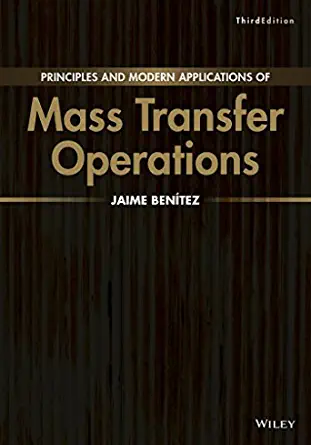Question
The carbon monoxide hydrogenation reaction to produce methanol is carried out in a continuous tubular reactor that operates in a steady state at 400 K
The carbon monoxide hydrogenation reaction to produce methanol is carried out in a continuous tubular reactor that operates in a steady state at 400 K and 8 bar, whose length is such that the effluent is in chemical equilibrium. The reaction proceeds according to the following chemical equation:
CO(g) +2H2(g) CH3OH (g)
The feed stream feed contains 20 mol% CO, 40 mol% H and 40 mol% N (fed as inert gas). The thermochemical formation data at
1. Given the value of the enthalpy of reaction, what type of reaction is the hydrogenation of carbon monoxide?
2. The value of the equilibrium constant under the reaction conditions is:
3. What is the maximum conversion that can be achieved in the reactor?
4. What is the mole fraction of methanol in the reactor effluent?
Step by Step Solution
There are 3 Steps involved in it
Step: 1

Get Instant Access to Expert-Tailored Solutions
See step-by-step solutions with expert insights and AI powered tools for academic success
Step: 2

Step: 3

Ace Your Homework with AI
Get the answers you need in no time with our AI-driven, step-by-step assistance
Get Started


